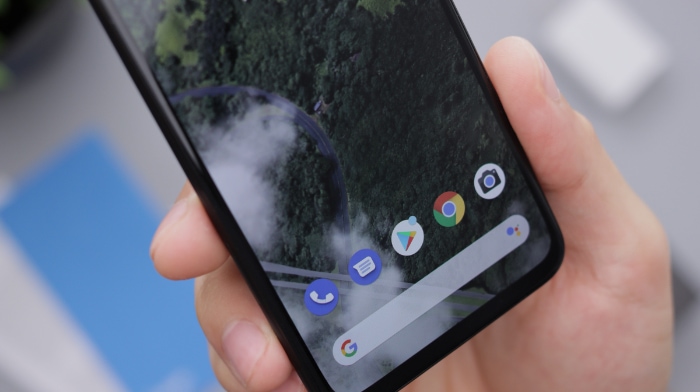What Happens When You Force Stop an App?

As digital consumers, we interact with a myriad of apps daily, from communication and productivity tools to games and multimedia platforms. At times, these apps can behave erratically, consume too many resources, or fail to respond entirely.
In such instances, you might have come across the option to ‘force stop' these apps. But what does ‘force stop' mean, and what does it do to an app?
The Concept of ‘Force Stop'
To comprehend the concept of ‘force stop,' it's important to differentiate it from simply closing an app. Generally, when we exit an app, it doesn't completely shut down.
Instead, it transitions to a ‘background' state, remaining idle but ready to be quickly resumed if required. This background state is necessary for functionalities like notifications and quick app switching, but it also means the app continues to use some device resources.
The ‘force stop' action, on the other hand, is a more severe action. When we ‘force stop' an app, we effectively end all its current functions, processes, and services, moving it to a ‘non-existent' or ‘dead' state.
It's akin to shutting down a computer rather than just putting it to sleep. It halts all of the app's activities, even those running in the background, and it remains in this state until you actively relaunch it.
The Role of ‘Force Stop'
The ‘force stop' function is a tool that users can leverage to fully halt an app's operations. It is particularly useful in situations where an app is malfunctioning, being unresponsive, or using more resources than it should.
By ‘force stopping' an app, users can regain control over their device's performance and troubleshoot problematic applications.
In most cases, using ‘force stop' should be a last resort measure. Typically, it is not needed during normal device use, but understanding its function and knowing when to use it can be beneficial for maintaining the performance and longevity of your device.
‘Force Stop' Across Different Platforms
Though the concept of ‘force stop' remains the same, its execution can vary across different platforms.
For example, Android devices provide an explicit ‘Force Stop' button for apps within the settings, whereas iOS devices handle force stopping somewhat differently, through a combination of exiting the app and clearing it from the recent app list.
Situations When You Might Need to ‘Force Stop' an App
Knowing when to use the ‘force stop' feature can be a game-changer in managing app performance. Here, we explore the scenarios in which this function might be necessary.
App Unresponsiveness
At times, an app may become unresponsive or ‘freeze.' This could be due to a variety of reasons, including system errors, software bugs, or compatibility issues.
If the traditional method of closing and reopening the app doesn't resolve the problem, force stopping can be used as a troubleshooting step to fully halt the app's processes and restart it afresh.
High Resource Usage
Apps running in the background of your device can consume memory and other resources, potentially slowing down device performance.
In cases where an app is utilizing an unusually high amount of resources, particularly if it's an app that you're not actively using, you may consider force stopping it to free up those resources and enhance your device's overall performance.
Persistent Notifications
Some apps can clutter your notification bar with persistent or unnecessary alerts. If turning off notifications within the app's settings doesn't work or if the app doesn't offer this option, force stopping the app could be a temporary solution to halt these notifications.
Privacy Concerns
Certain apps might continue to track data or use device features like GPS in the background. If you have privacy concerns about a specific app and wish to ensure it is completely inactive when not in use, force stopping it can provide peace of mind.
Troublesome App Updates
Sometimes, after an app update, you might encounter issues with the app's functionality. Force stopping the app can often help in such scenarios, resetting its active processes and possibly resolving any post-update problems.
It's important to note that force stopping should be employed as a last resort after other basic troubleshooting methods fail. While it can be an effective tool, it's also a powerful one that could potentially disrupt the normal functionality of an app.
How to ‘Force Stop' an App

Before proceeding with the steps to force stop an app, it's important to reiterate that this action should be considered a last resort. The process of force stopping an app can vary depending on the device's operating system.
Here, we'll cover the most common systems – Android and iOS.
Force Stopping an App on Android
- Open Settings: Tap on the “Settings” icon on your device. This is typically found in the app drawer or on the home screen.
- Access Apps: Within the settings, find and select the “Apps” or “App Management” section. This will show a list of all the apps currently installed on your device.
- Select the App: Scroll through the list and tap on the app you want to force stop.
- Force Stop the App: On the app's info page, you will find a “Force Stop” button. Tap on it. A prompt will appear, warning you that the app may misbehave. Tap “OK” to proceed.
Force Stopping an App on iOS
Apple's iOS operates differently, and there's technically no ‘force stop' feature. However, you can achieve a similar outcome by removing the app from the recent apps list.
- Access the App Switcher: From the Home Screen, swiftly swipe up from the bottom and pause in the middle of the screen. If you're using an iPhone with a Home button, double-click it instead.
- Find the App: Swipe right or left to find the app you want to close.
- Close the App: Swipe up on the app's preview to close it. This will remove it from the recently used apps list and stop all its processes.
In the case of an unresponsive app on iOS, you may need to restart your device if the problem persists after following the above steps.
What Happens When You ‘Force Stop' an App
When an app is force stopped, it undergoes a few fundamental changes in its operational state. It's important to understand these changes to make informed decisions about when and how to use this function.
Immediate Effects on the App
As soon as you ‘force stop' an app, all its active processes are terminated. This includes any services running in the foreground or background, as well as any system processes related to the app.
The app essentially transitions from an active or idle state to a ‘non-existent' state.
Effects on App Performance
Once an app has been force stopped, it won't restart or run any processes unless manually reactivated by the user (by opening the app) or by system calls for app-specific events like alarms.
This means the app won't consume any resources, which can free up memory and potentially improve device performance. However, it also means that the app won't provide any updates or notifications until it's restarted.
Impact on App Data
Force stopping an app does not delete the app's data. Saved files, settings, and progress within the app should remain intact.
However, any unsaved work (for instance, a draft message in a communication app or an ongoing game progress) might be lost since the app's processes are abruptly terminated.
Resuming App Functionality
To return a force stopped app to its normal functioning, you need to manually relaunch it. Simply tap on the app icon as you would normally do to open it.
In some cases, force stopping an app can cause it to reset certain functionalities, and it may take longer to open as it restarts its services.
Conclusion
Understanding the tools and features at our disposal to manage app performance can greatly enhance our user experience and device functionality. The ‘force stop' feature, despite being a powerful tool, often remains misunderstood or underutilized.
In this blog, we have unraveled the concept of ‘force stopping' an app, highlighting its role in app management, how it affects an app's lifecycle, and when it might be beneficial to use.
We also dived into the steps on how to ‘force stop' an app on various operating systems, namely Android and iOS.
However, it's important to remember that while ‘force stop' can be a potent tool for managing unresponsive or resource-hungry apps, it is not a catch-all solution. Using it unwisely could potentially disrupt app functionality and lead to an unsatisfactory user experience.
Hence, it's always recommended to use this option judiciously, keeping in mind its potential implications and limitations.
In conclusion, ‘force stop' is a valuable tool in our digital toolkit when used appropriately. By understanding its role and functionality, we can ensure a smoother and more efficient digital experience.
Whether you're a seasoned tech enthusiast or a casual user, knowing when and how to ‘force stop' an app can equip you to better navigate your digital world.


